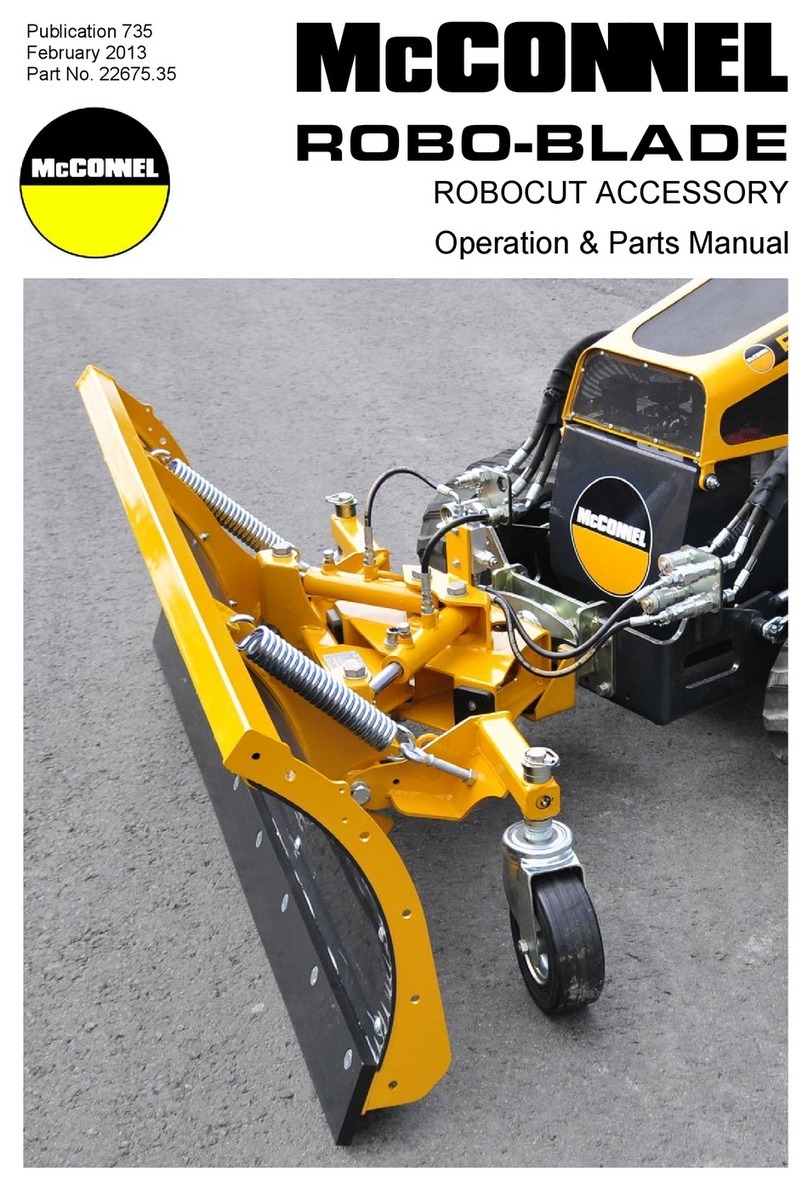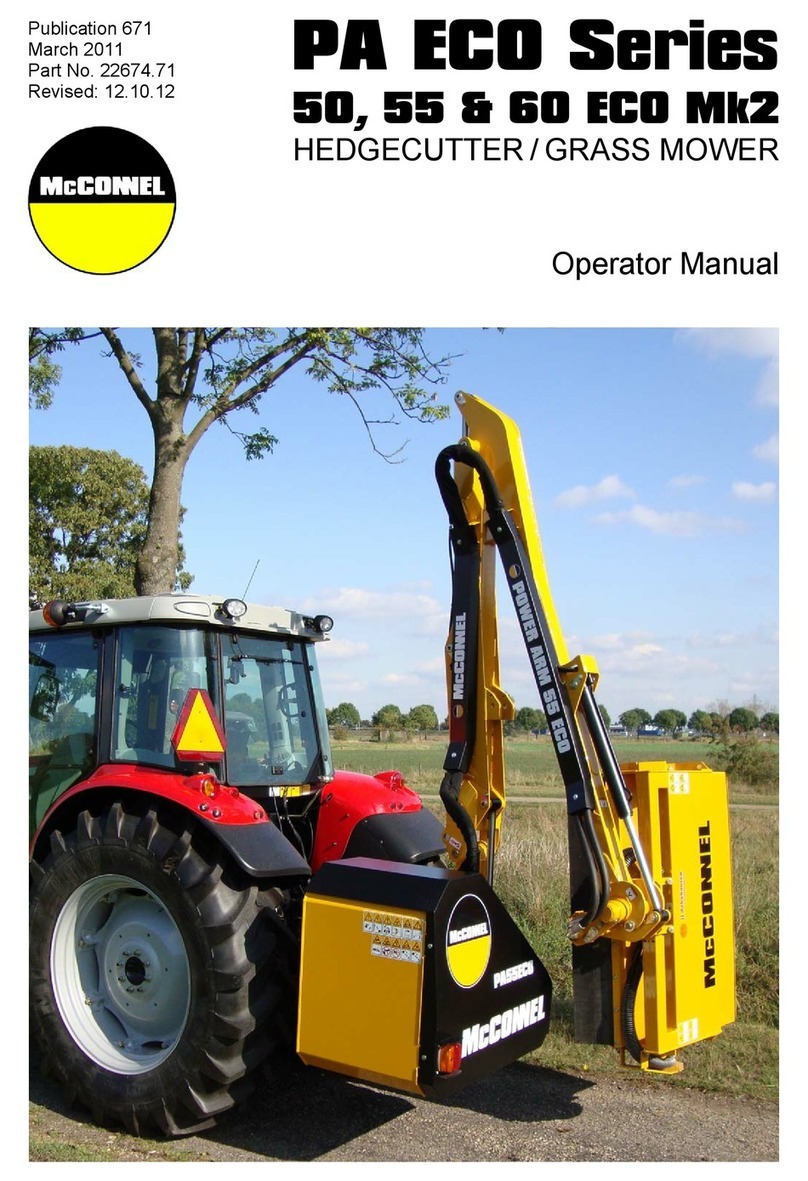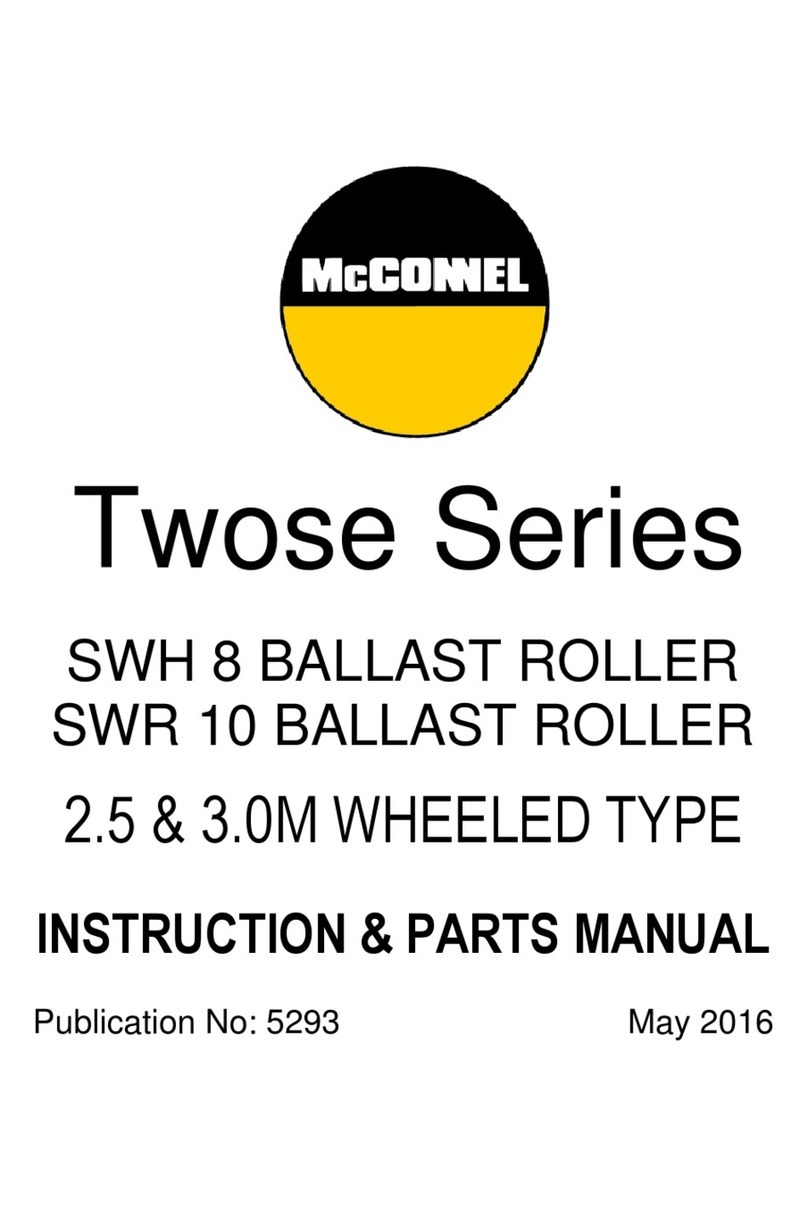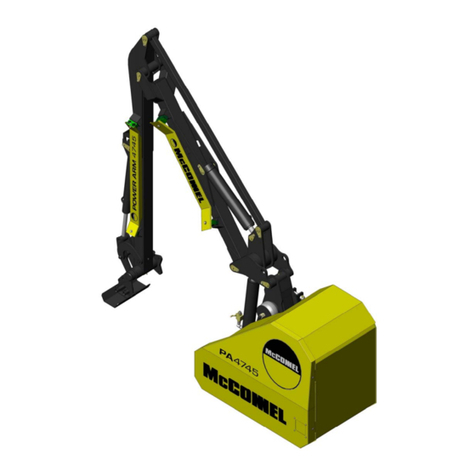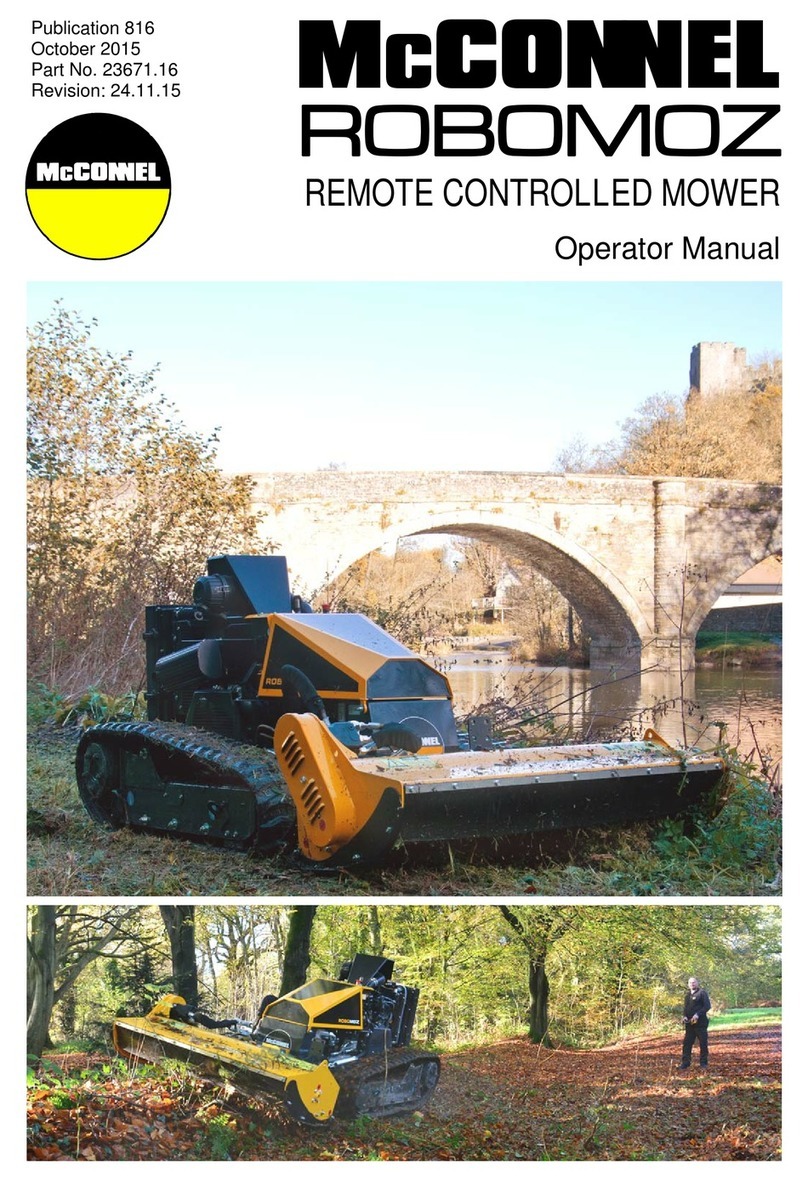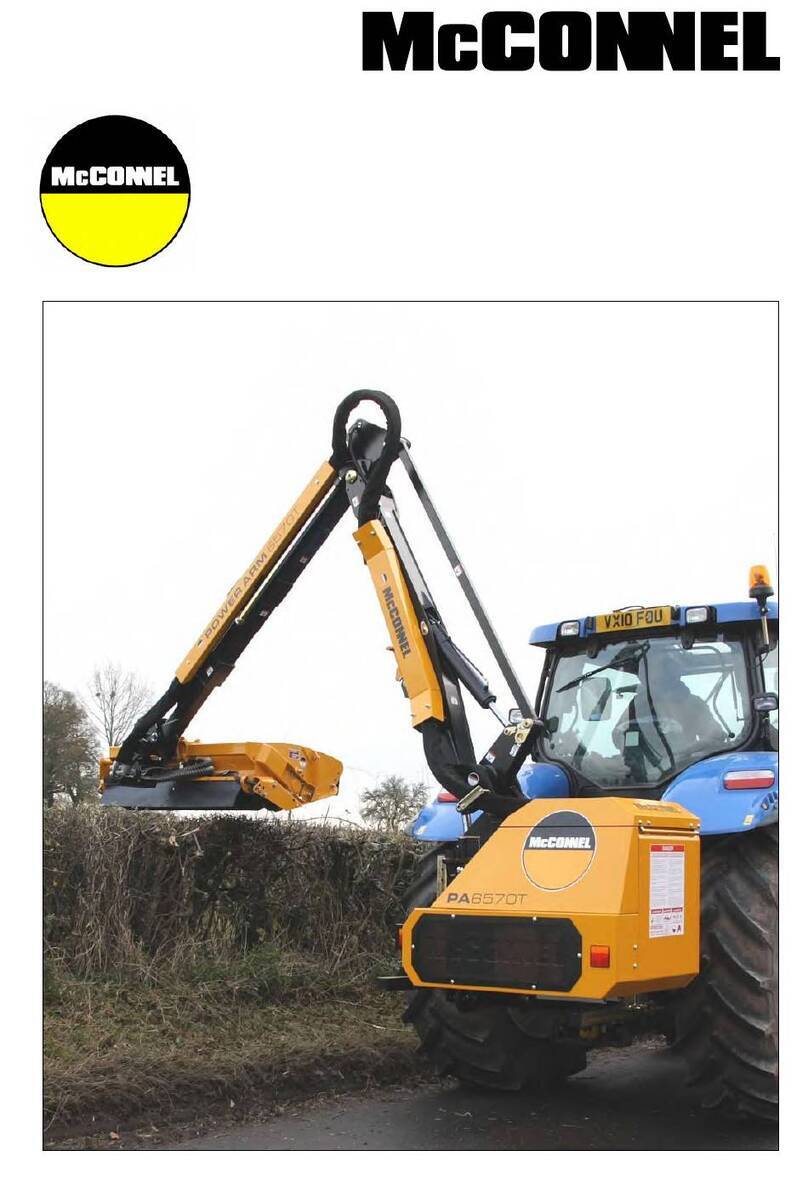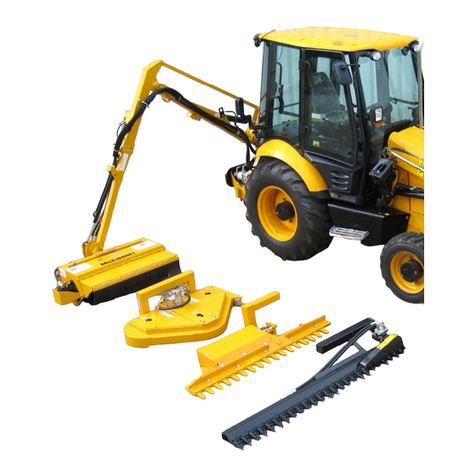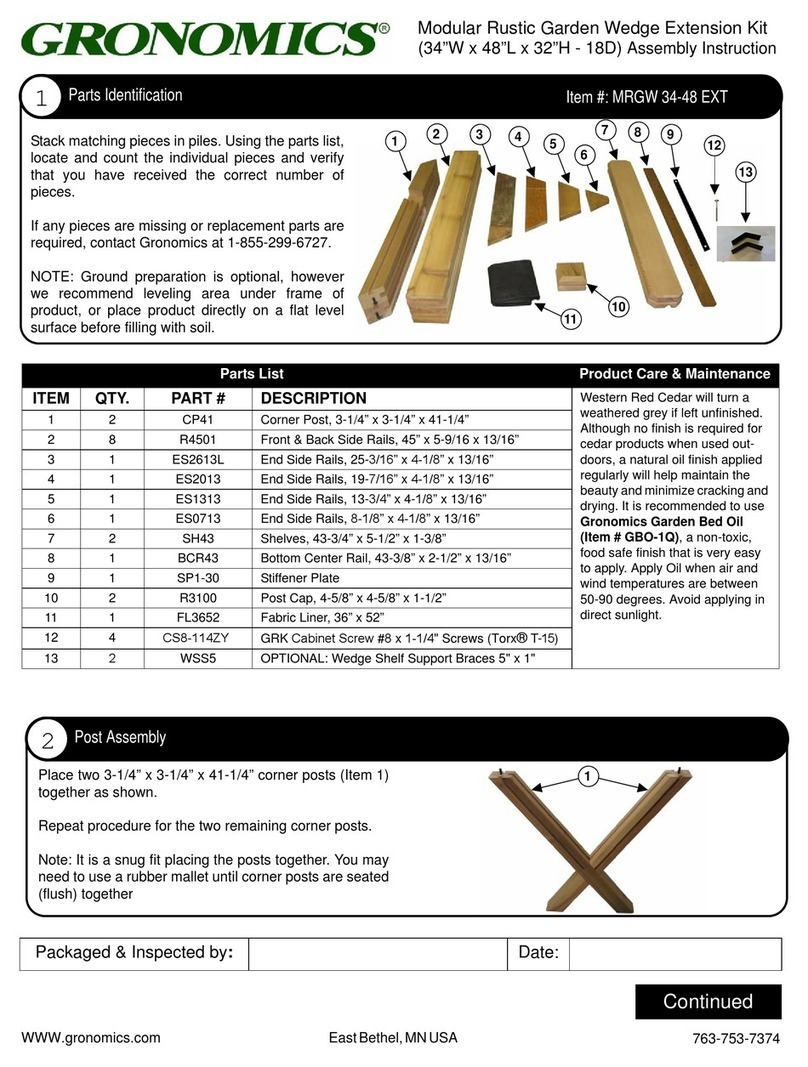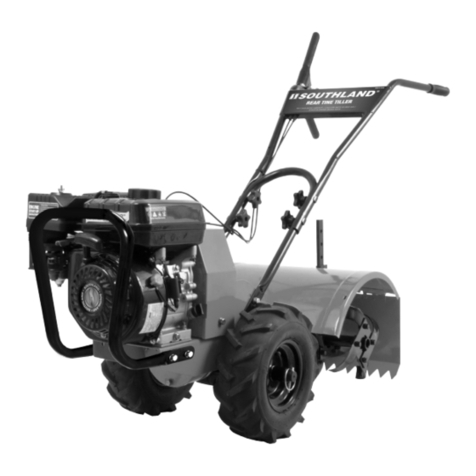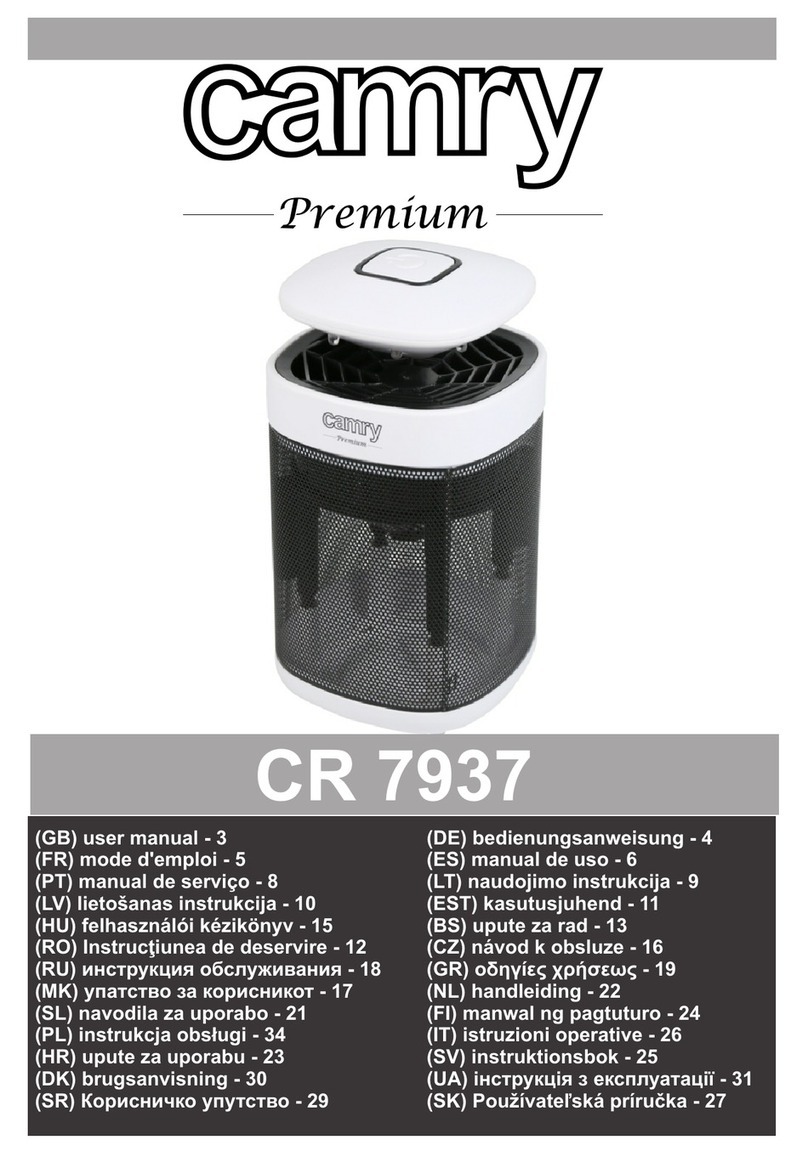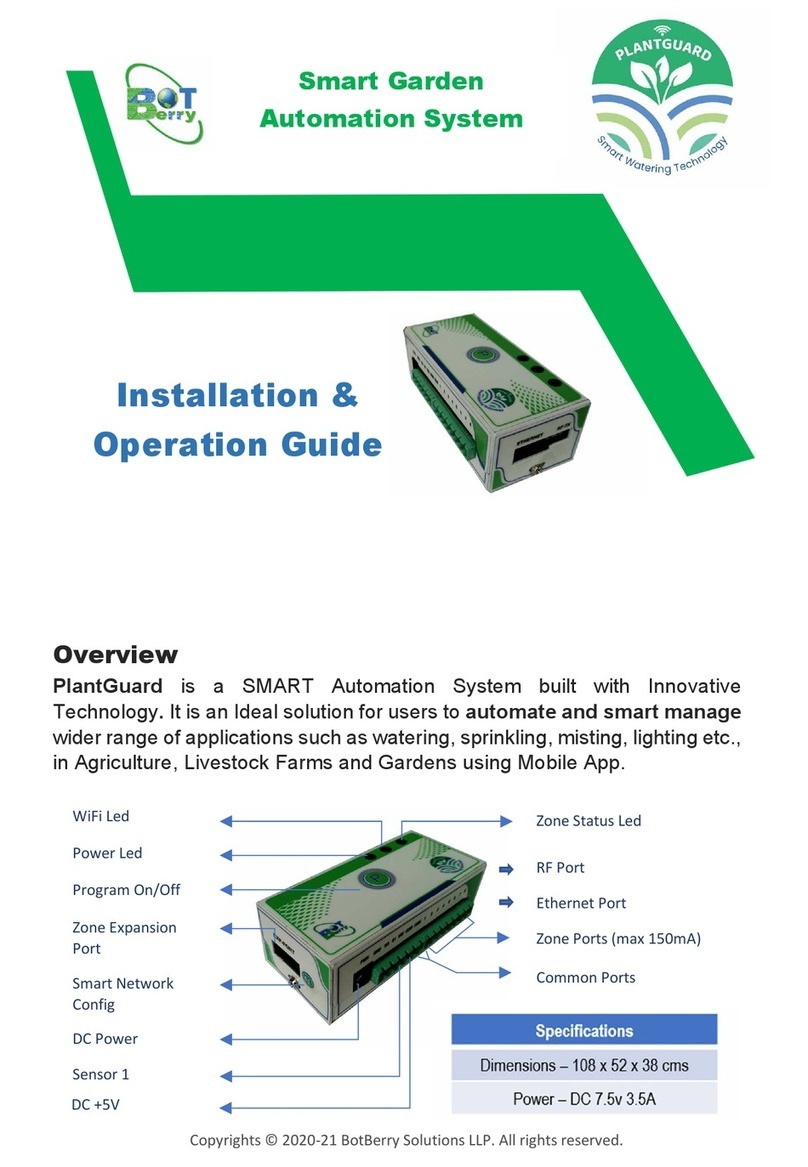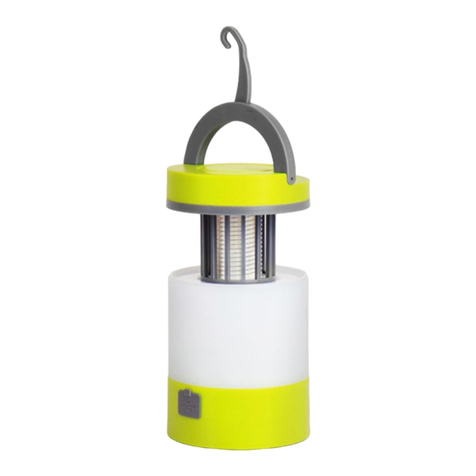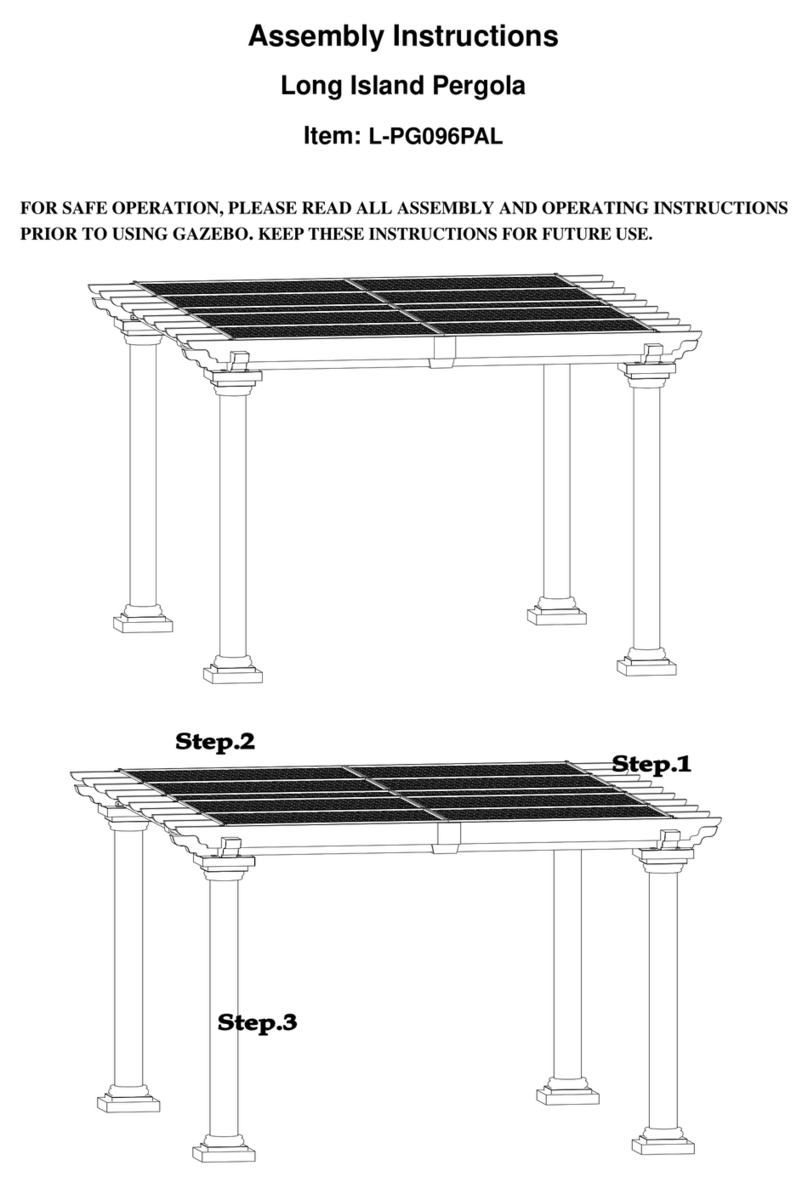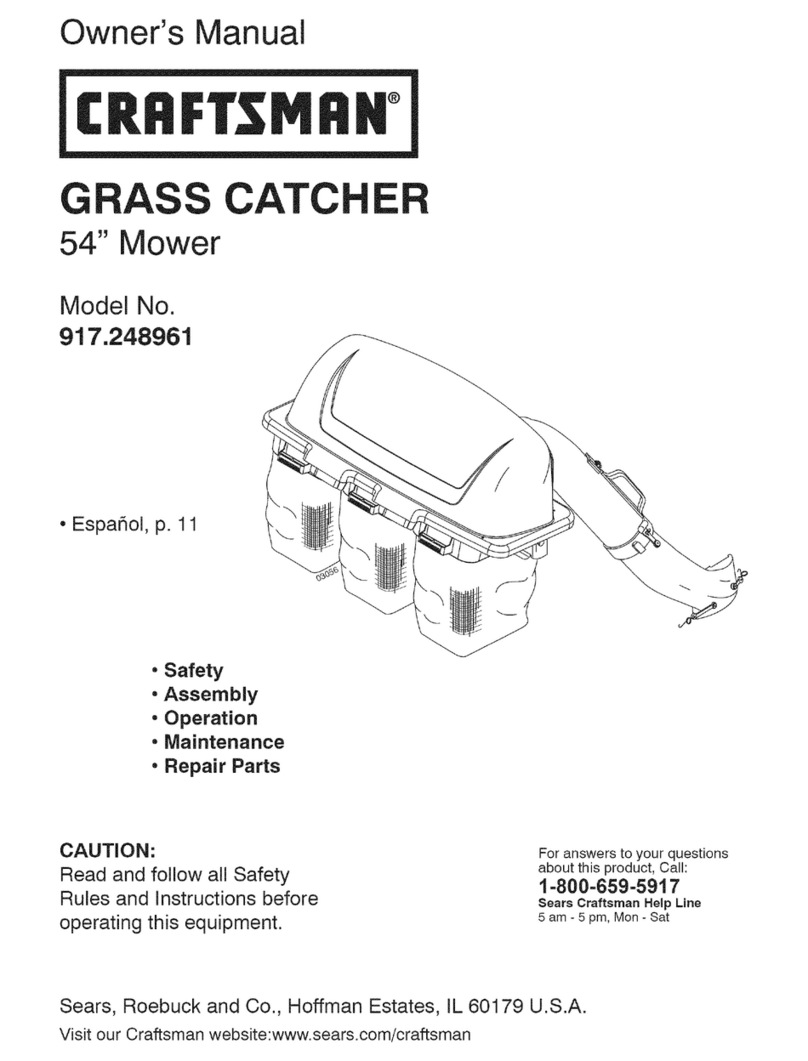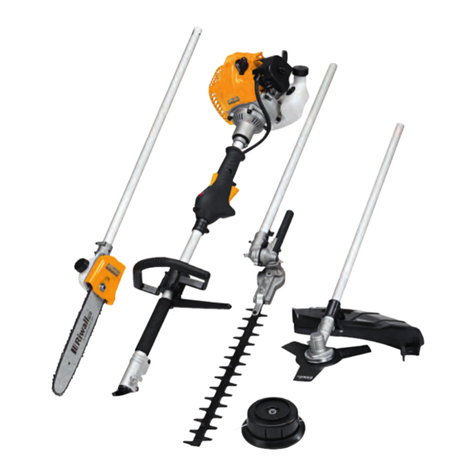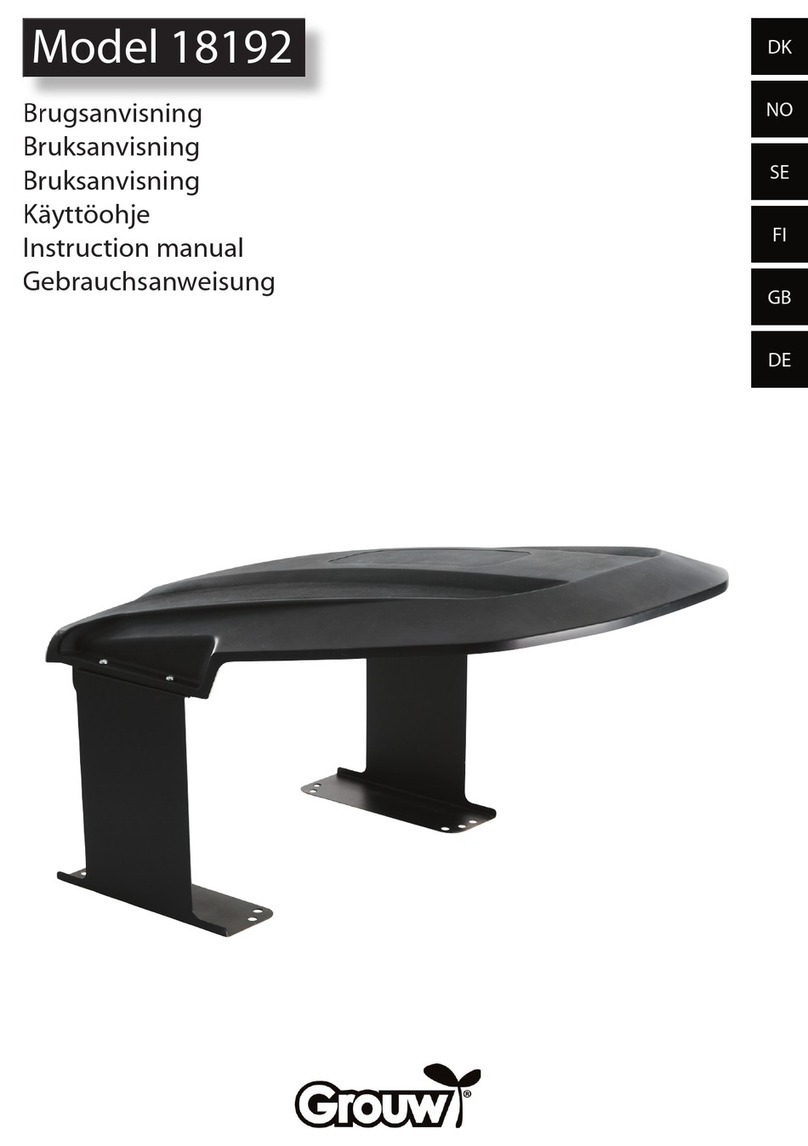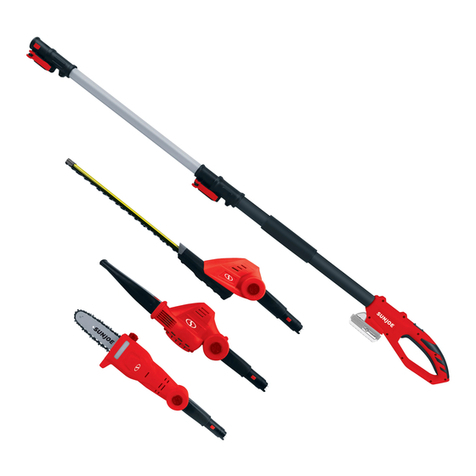McConnel PA ECO Series User manual

Publication 472
February 2005
Part No. 41570.72
Revised: 15.09.10
PA ECO Series
50
,
55 & 60 ECO
HEDGE & GRASS CUTTERS
Operator Manual

IMPORTANT
VERIFICATION OF WARRANTY REGISTRATION
DEALER WARRANTY INFORMATION & REGISTRATION VERIFICATION
It is imperative that the selling dealer registers this machine with McConnel Limited before
delivery to the end user – failure to do so may affect the validity of the machine warranty.
To register machines go to the McConnel Limited web site at www.mcconnel.com, log
onto ‘Dealer Inside’ and select the ‘Machine Registration button’which can be found in
the Service Section of the site. Confirm to the customer that the machine has been
registered in the section below.
Should you experience any problems registering a machine in this manner please contact
the McConnel Service Department on 01584 875848.
Registration Verification
Dealer Name:
……………………..…………………………………………………………….
Dealer Address: …….………………………………………………………………………….
Customer Name: ……………………..…………………………………………………………
Date of Warranty Registration: ……/……/...…… Dealer Signature: ………………..……
NOTE TO CUSTOMER / OWNER
Please ensure that the above section above has been completed and signed by the selling
dealer to verify that your machine has been registered with McConnel Limited.
IMPORTANT: During the initial ‘bedding in’ period of a new machine it is the customer’s responsibility
to regularly inspect all nuts, bolts and hose connections for tightness and re-tighten if required. New
hydraulic connections occasionally weep small amounts of oil as the seals and joints settle in – where
this occurs it can be cured by re-tightening the connection – refer to torque settings chart below. The
tasks stated above should be performed on an hourly basis during the first day of work and at least
daily thereafter as part of the machines general maintenance procedure.
TORQUE SETTINGS FOR HYDRAULIC FITTINGS
HYDRAULIC HOSE ENDS PORT ADAPTORS WITH BONDED SEALS
BSP Setting Metric
BSP Setting Metric
1/4” 18 Nm 19 mm 1/4” 34 Nm 19 mm
3/8” 31 Nm 22 mm 3/8” 47 Nm 22 mm
1/2” 49 Nm 27 mm 1/2” 102 Nm 27 mm
5/8” 60 Nm 30 mm 5/8” 122 Nm 30 mm
3/4” 80 Nm 32 mm 3/4” 149 Nm 32 mm
1” 125 Nm 41 mm 1” 203 Nm 41 mm
1.1/4” 190 Nm 50 mm 1.1/4” 305 Nm 50 mm
1.1/2” 250 Nm 55 mm 1.1/2” 305 Nm 55 mm
2” 420 Nm 70 mm 2” 400 Nm 70 mm

WARRANTY POLICY
WARRANTY REGISTRATION
All machines must be registered, by the selling dealer with McConnel Ltd, before delivery to the end user.
On receipt of the goods it is the buyer’s responsibility to check that the Verification of Warranty Registration
in the Operator’s Manual has been completed by the selling dealer.
1. LIMITED WARRANTIES
1.01. All machines supplied by McConnel Limited are warranted to be free from defects in material and
workmanship from the date of sale to the original purchaser for a period of 12 months, unless a
different period is specified.
1.02. All spare parts supplied by McConnel Limited are warranted to be free from defects in material and
workmanship from the date of sale to the original purchaser for a period of 6 months.
1.03. The manufacturer will replace or repair for the purchaser any part or parts found, upon examination at
its factory, to be defective under normal use and service due to defects in material or workmanship.
Returned parts must be complete and unexamined.
1.04. This warranty does not apply to any part of the goods, which has been subjected to improper or
abnormal use, negligence, alteration, modification, fitment of non-genuine parts, accident damage, or
damage resulting from contact with overhead power lines, damage caused by foreign objects (e.g.
stones, iron, material other than vegetation), failure due to lack of maintenance, use of incorrect oil or
lubricants, contamination of the oil, or which has served its normal life. This warranty does not apply to
any expendable items such as blades, flails, flap kits, skids, soil engaging parts, shields, guards, wear
pads or pneumatic tyres.
1.05. Temporary repairs and consequential loss - i.e. oil, downtime and associated parts are specifically
excluded from the warranty.
1.06. Warranty on hoses is limited to 12 months and does not include hoses which have suffered external
damage. Only complete hoses may be returned under warranty, any which have been cut or repaired
will be rejected.
1.07. Machines must be repaired immediately a problem arises. Continued use of the machine after a
problem has occurred can result in further component failures, for which McConnel Ltd cannot be held
liable, and may have safety implications.
1.08. Except as provided herein, no employee, agent, dealer or other person is authorised to give any
warranties of any nature on behalf of McConnel Ltd.
1.09. For machine warranty periods in excess of 12 months the following additional exclusions shall apply:
1) Hoses, external seals, exposed pipes and hydraulic tank breathers.
2) Filters.
3) Rubber mountings.
4) External electric wiring.
N.B. Warranty cover will be invalid if any non-genuine parts have been fitted or used. Use of non-
genuine parts may seriously affect the machine’s performance and safety. McConnel Ltd. cannot be
held responsible for any failures or safety implications that arise due to the use of non-genuine
parts.

2. REMEDIES AND PROCEDURES
2.01. The warranty is not effective unless the Selling Dealer registers the machine, via the McConnel web
site and confirms the registration to the purchaser by completing the Verification of Warranty
Registration in the operator’s manual.
2.02. Any fault must be reported to an authorised McConnel dealer as soon as it occurs. Continued use of a
machine, after a fault has occurred, can result in further component failure for which McConnel Ltd
cannot be held liable.
2.03. Repairs should be undertaken within two days of the failure. Claims submitted for repairs undertaken
more than 2 weeks after a failure has occurred, or 2 days after the parts were supplied will be rejected,
unless the delay has been authorised by McConnel Ltd.
2.04. All claims must be submitted, by an authorised McConnel Service Dealer, within 30 days of the date of
repair.
2.05. Following examination of the claim and parts the manufacture will pay, at their discretion, for any valid
claim the cost of any parts and an appropriate labour allowance if applicable.
2.06. The submission of a claim is not a guarantee of payment.
2.07. Any decision reached by McConnel Ltd. is final.
3. LIMITATION OF LIABILITY
3.01. The manufacturer disclaims any express (except as set forth herein) and implied warranties with
respect to the goods including, but not limited to, merchantability and fitness for a particular purpose.
3.02. The manufacturer makes no warranty as to the design, capability, capacity or suitability for use of the
goods.
3.03. Except as provided herein, the manufacturer shall have no liability or responsibility to the purchaser or
any other person or entity with respect to any liability, loss, or damage caused or alleged to be caused
directly or indirectly by the goods including, but not limited to, any indirect, special, consequential, or
incidental damages resulting from the use or operation of the goods or any breach of this warranty.
Notwithstanding the above limitations and warranties, the manufacturer’s liability hereunder for
damages incurred by the purchaser or others shall not exceed the price of the goods.
3.04. No action arising out of any claimed breach of this warranty or transactions under this warranty may be
brought more than one (1) year after the cause of the action has occurred.
4. MISCELLANEOUS
4.01. The manufacturer may waive compliance with any of the terms of this limited warranty, but no waiver
of any terms shall be deemed to be a waiver of any other term.
4.02. If any provision of this limited warranty shall violate any applicable law and is held to be unenforceable,
then the invalidity of such provision shall not invalidate any other provisions herein.
4.03. Applicable law may provide rights and benefits to the purchaser in addition to those provided herein.


For Safety and Performance …
ALWAYS READ THIS BOOK FIRST
McCONNELLIMITED
Temeside Works
Ludlow
Shropshire
England
Telephone: 01584 873131
www.mcconnel.com
NOISE STATEMENT
The equivalent daily personal noise exposure from this machine measured at the operators’ ear is
within the range 78 – 85 dB, these figures apply to a normal distribution of use where the noise
fluctuates between zero and maximum. The figures assume that the machine is fitted to a tractor with
a ‘quiet’ cab with the windows closed in a generally open environment. We recommend that the
windows are kept closed. With the cab rear window open the equivalent daily personal noise
exposure will increase to a figure within the range 82 – 88 dB. At equivalent daily noise exposure
levels of between 85 – 90 dB ear protection is recommended – it should be used if any window is left
open.

EC DECLARATION OF CONFORMITY
Conforming to EEC Machinery Directive 98/37/EC*
We,
McCONNEL LIMITED,
Temeside Works, Ludlow, Shropshire SY8 1JL.
Declare under our sole responsibility that:
The product (type) ……………………………………………………………………..
………………………………………………………………………………………….
Product Code …………………………………………………………………………..
Serial No. & Date ……………………………………. Type …………………………
Manufactured by the above company/* ………………………………………
………………………………………………………………………………………….
(* insert business name and full address if not stated above)
Complies with the required provisions of the Machinery Directive 98/37/EC, *
previously Directive 89/392/EEC as amended by Directives 91/368/EEC, 93/44/EEC
and 93/68/EEC.
The machinery directive is supported by;
•BS EN ISO 12100:2003 Safety of Machinery. This standard is made up of two
parts; Part 1 Terminology, methodology, Part 2 Technical Specifications.
•BS EN 1050 Safety of machinery - Principles of risk assessment.
•and other national standards associated with its design and construction as
listed in the Technical File.
The Machinery Directive is fully implemented into UK law by means of the Supply
of Machinery (Safety) Regulations 1992 (SI 1992/3073) as amended by The Supply
of Machinery (Safety) (Amendment) Regulations 1994 (SI 1994/2063).
Signed …………………………..……………………………………………………...
on behalf of McCONNEL LIMITED
Responsible Person
Status: Chief Design Engineer Date: February 2005
Tractor Mounted Hedgecutter
PE50, PE55, PE60

EC DECLARATION OF CONFORMITY
Conforming to EEC Machinery Directive 98/37/EC*
We,
McCONNEL LIMITED,
Temeside Works, Ludlow, Shropshire SY8 1JL.
Declare under our sole responsibility that:
The product (type) ……………………………………………………………………..
………………………………………………………………………………………….
Product Code …………………………………………………………………………..
Serial No. & Date ……………………………………. Type …………………………
Manufactured by the above company/* ………………………………………
………………………………………………………………………………………….
(* insert business name and full address if not stated above)
Complies with the required provisions of the Machinery Directive 98/37/EC, *
previously Directive 89/392/EEC as amended by Directives 91/368/EEC, 93/44/EEC
and 93/68/EEC.
The machinery directive is supported by;
•BS EN ISO 12100:2003 Safety of Machinery. This standard is made up of two
parts; Part 1 Terminology, methodology, Part 2 Technical Specifications.
•BS EN 1050 Safety of machinery - Principles of risk assessment.
•and other national standards associated with its design and construction as
listed in the Technical File.
The Machinery Directive is fully implemented into UK law by means of the Supply
of Machinery (Safety) Regulations 1992 (SI 1992/3073) as amended by The Supply
of Machinery (Safety) (Amendment) Regulations 1994 (SI 1994/2063).
Signed …………………………..……………………………………………………...
on behalf of McCONNEL LIMITED
Responsible Person
Status: Chief Design Engineer Date: February 2005
Arm Mounted Flailhead
BD12, BD16, F110, F112, F115, F012, F016

LIST OF CONTENTS
Page No.
General Information 1
Specifications 2
Safety Information 4
Preparation
Vehicle / Tractor Preparation 8
Pre-Attachment – Machine Preparation 9
Oil Recommendations Chart 10
Initial Attachment of the Machine 11
Flailhead Attachment 16
Fitting Control Unit 17
Running Up Procedure 17
Detaching the Machine from the Tractor – Removal Procedure 18
Storage of the Machine 19
Subsequent Attachment to Identical Tractor 19
Subsequent Attachment to Different Tractor 19
Operation
Preparation 20
Machine Controls – Cable Controls Lever Identification & Function 21
Machine Controls – Control and Arm Movements 22
Cable Rotor Control 23
XTC Proportional Controls 24
Breakaway System and Slew 28
Transportation
Moving into the Transport Position 29
Transport Positions – with and without Flailhead attached 30
Transport Height 31
Overhead Obstructions 31
Moving from Transport to Work Position 31
Rotor Operation
Engaging drive 32
Rotor Operating Speed 32
Tractor Forward Speed 32
Hedge Cutting Procedure 33
Safe Working Practices
Working on Public Highways 34
General Working Practices 34
Working on Adverse Slopes 34
High Voltage Cables 35
Lift Float – Optional Extra
Lift Float Kit – Fitting Location 36
Lift Float Kit – Power Supply 36

LIST OF CONTENTS - Continued
Page No.
Maintenance
Lubrication Points 37
PTO Shaft Inspection 37
PTO Shaft Lubrication 37
Hydraulic System
Oil Supply 38
Filtration Maintenance 38
Suction Strainer 38
Return Line Filter 38
PTO Gearbox 38
Hydraulic Hoses
Hose Replacement 39
Torque Settings 39
Control Cables
Control Cable Information 40

1
GENERAL INFORMATION
Always read this manual before fitting or operating the machine – whenever any doubt
exists contact your dealer or the McConnel Service Department for advice and assistance.
Use only McConnel Genuine Service Parts on McConnel Equipment and Machines
DEFINITIONS –The following definitions apply throughout this manual:
WARNING
An operating procedure, technique etc., which –
can result in personal injury or loss of life if not observed carefully.
CAUTION
An operating procedure, technique etc., which –
can result in damage to either machine or equipment if not observed carefully.
NOTE
An operating procedure, technique etc., which –
is considered essential to emphasis.
LEFT AND RIGHT HAND
This term is applicable to the machine when attached to the tractor and is viewed
from the rear – this also applies to tractor references.
MACHINE & DEALER INFORMATION
Record the Serial Number of your machine on this page and always quote this number when
ordering parts. Whenever information concerning the machine is requested remember also to state
the make and model of tractor to which the machine is fitted.
Machine Serial Number:
Installation Date:
Machine Model details:
Dealer Name:
Dealer Address:
Dealer Telephone No:
Dealer Email Address:

2
SPECIFICATIONS
All Models
•Linkage Mounted
•Right Hand Build
•Totally Independent Hydraulics
•95°Power Slew
•Cable Controls
•Independent Rotor ON/OFF Valve
•200-litre Hydraulic Reservoir
•Choice of Operator Controls
Optional Extras
•Lift Float Kit

3
NOTES

4
SAFETY SECTION
This machine has the potential to be extremely dangerous, in the wrong hands it can kill or
maim. It is therefore imperative that both owner, and operator of this machine, read and
understand the following section to ensure that they are fully aware of the dangers that do,
or may exist, and their responsibilities surrounding the use and operation of the machine.
The operator of this machine is responsible not only for their own safety but equally for the
safety of others who may come into the close proximity of the machine, as the owner you
are responsible for both.
When the machine is not in use the cutting head should be lowered to rest on the ground.
In the event of a fault being detected with the machine’s operation it should be stopped
immediately and not used again until the fault has been corrected by a qualified technician.
POTENTIAL SIGNIFICANT DANGERS ASSOCIATED WITH THE USE OF THIS
MACHINE:
▲Being hit by debris thrown by rotating components.
▲Being hit by machine parts ejected through damage during use.
▲Being caught on a rotating power take-off (PTO) shaft.
▲Being caught in other moving parts i.e.: belts, pulleys and cutting heads.
▲Electrocution from Overhead Power Lines (by contact with or ‘flashover’ from).
▲Being hit by cutting heads or machine arms as they move.
▲Becoming trapped between tractor and machine when hitching or unhitching.
▲Tractor overbalancing when machine arm is extended.
▲Injection of high-pressure oil from hydraulic hoses or couplings.
▲Machine overbalancing when freestanding (out of use).
▲Road traffic accidents due to collision or debris on the road.

5
BEFORE USING THIS MACHINE YOU MUST:
▲Ensure you read all sections of the operator handbook.
▲Ensure the operator is, or has been, properly trained to use the machine.
▲Ensure the operator has been issued with and reads the operator handbook.
▲Ensure the operator understands and follows the instructions in operator handbook.
▲Ensure the tractor front, rear and side(s) are fitted with metal mesh or polycarbonate
guards of suitable size and strength to protect the operator against thrown debris or
parts.
▲Ensure tractor guards are fitted correctly, are undamaged and kept properly
maintained.
▲Ensure that all machine guards are in position, are undamaged, and are kept
maintained in accordance with the manufacturer’s recommendations.
▲Ensure flails and their fixings are of a type recommended by the manufacturer, are
securely attached and that none are missing or damaged.
▲Ensure hydraulic pipes are carefully and correctly routed to avoid damage by chaffing,
stretching or pinching and that they are held in place with the correct fittings.
▲Always follow the manufacturer’s instructions for attachment and removal of the
machine from the tractor.
▲Check that the machine fittings and couplings are in good condition.
▲Ensure the tractor meets the minimum weight recommendations of the machine’s
manufacturer and that ballast is used as necessary.
▲Always inspect the work area thoroughly before starting to note obstacles and remove
wire, bottles, cans and other debris.
▲Use clear suitably sized warning signs to alert others to the nature of the machine
working within that area. Signs should be placed at both ends of the work site. (It is
recommended that signs used are of a size and type specified by the Department of
Transport and positioned in accordance with their, and the Local Highways Authority,
guidelines).
▲Ensure the operator is protected from noise. Ear defenders should be worn and tractor
cab doors and windows must be kept closed. Machine controls should be routed
through proprietary openings in the cab to enable all windows to be shut fully.
▲Always work at a safe speed taking account of the conditions i.e.: terrain, highway
proximity and obstacles around and above the machine. Extra special attention should
be applied to Overhead Power Lines. Some of our machines are capable of reach in
excess of 8 metres (26 feet) this means they have the potential to well exceed, by
possibly 3 metres (9’ 9”), the lowest legal minimum height of 5.2 metres from the
ground for 11,000 and 33,000 volt power lines. It cannot be stressed enough the
dangers that surround this capability, it is therefore vital that the operator is fully aware
of the maximum height and reach of the machine, and that they are fully conversant
with all aspects regarding the safe minimum distances that apply when working with
machines in close proximity to Power Lines. (Further information on this subject can be
obtained from the Health & Safety Executive or your Local Power Company).

6
▲Always disengage the machine, kill the tractor engine, remove and pocket the key
before dismounting for any reason.
▲Always clear up all debris left at the work area, it may cause hazard to others.
▲Always ensure when you remove your machine from the tractor that it is left in a safe
and stable position using the stands and props provided and secured if necessary.
WHEN NOT TO USE THIS MACHINE:
▲Never attempt to use this machine if you have not been trained to do so.
▲Never uses a machine until you have read and understood the operator handbook, are
familiar with it, and practiced the controls.
▲Never use a machine that is poorly maintained.
▲Never use a machine if guards are missing or damaged.
▲Never use a machine on which the hydraulic system shows signs of wear or damage.
▲Never fit, or use, a machine on a tractor that does not meet the manufacturer’s
minimum specification level.
▲Never use a machine fitted to a tractor that does not have suitable front, rear and
side(s) cab guarding made of metal mesh or polycarbonate.
▲Never use the machine if the tractor cab guarding is damaged, deteriorating or badly
fitted.
▲Never turn a machine cutting head to an angle that causes debris to be ejected
towards the cab.
▲Never start or continue to work a machine if people are nearby or approaching - Stop
and wait until they are at a safe distance before continuing. WARNING: Some Cutting
Heads may continue to ‘freewheel’ for up to 40 seconds after being stopped.
▲Never attempt to use a machine on materials in excess of its capability.
▲Never use a machine to perform a task it has not been designed to do.
▲Never operate the tractor or machine controls from any position other than from the
driving seat, especially whilst hitching or unhitching the machine.
▲Never carry out maintenance of a machine or a tractor whilst the engine is running –
the engine should be switched off, the key removed and pocketed.
▲Never leave a machine unattended in a raised position – it should be lowered to the
ground in a safe position on a level firm site.
▲Never leave a tractor with the key in or the engine running.
▲Never carry out maintenance on any part or component of a machine that is raised
unless that part or component has been properly substantially braced or supported.
▲Never attempt to detect a hydraulic leak with your hand – use a piece of cardboard.
▲Never allow children near to, or play on, a tractor or machine under any circumstances.

7
ADDITIONAL SAFETY ADVICE
Training
Operators need to be competent and fully capable of operating this machine in a safe and
efficient way prior to attempting to use it in any public place. We advise therefore that the
prospective operator make use of relevant training courses available such as those run by
the Agricultural Training Board, Agricultural Colleges, Dealers and McConnel.
Working in Public Places
When working in public places such as roadsides, consideration should be paid to others
in the vicinity. Stop the machine immediately when pedestrians, cyclists and horse riders
etc. pass. Restart only when they are at a distance that causes no risk to their safety.
Warning Signs
It is advisable that any working area be covered by suitable warning signs and statutory in
public places. Signs should be highly visible and well placed in order to give clear
advanced warning of the hazard. Contact the Department of Transport or your Local
Highways Authority to obtain detailed information on this subject. The latter should be
contacted prior to working on the public highway advising them of the time and location of
the intended work asking what is required by way of signs and procedure. – ‘Non-
authorised placement of road signs may create offences under the Highways Act’.
Suggested Warning Signs Required
“Road works ahead” warning sign with a supplementary “Hedge cutting” plate. “For 1
mile” or appropriate shorter distance may be added to the plate.
“Road narrows” warning sign with supplementary “Single file traffic” plate.
White on blue “Keep right” (*) arrow sign on rear of machine.
* Note – this applies to UK Market machines where traffic passes to the right of a machine
working in the same direction as the traffic flow. The direction, use and colour of the arrow
sign will depend on the country of use and the Local Highway Authorities regulations in the
locality.
Use of Warning Signs
▲On two-way roads one set of signs is needed facing traffic in each direction.
▲Work should be within 1 mile of the signs.
▲Work only when visibility is good and at times of low risk e.g.: NOT during ‘rush-hour’.
▲Vehicles should have an amber-flashing beacon.
▲Ideally, vehicles should be conspicuously coloured.
▲Debris should be removed from the road and path as soon as practicable, and at
regular intervals, wearing high visibility clothing and before removing the hazard
warning signs.
▲Collect all road signs promptly when the job is completed.
Although the information given here covers a wide range of safety subjects, it is impossible to
predict every eventuality that can occur under differing circumstances whilst operating this
machine. No advice given here can replace ‘good common sense’ and ‘total awareness’ at all times,
but will go a long way towards the safe use of your McConnel machine.

8
VEHICLE / TRACTOR PREPARATION
We recommend vehicles are fitted with
cabs using ‘safety glass’ windows and
protective guarding when used with our
machines.
Fit Operator Guard (part no. 73 13 324)
using the hooks provided. Shape the mesh
to cover all vulnerable areas.
Remember the driver must be looking
through mesh and/or polycarbonate
glazing when viewing the flail head in any working position - unless the vehicle/ cab
manufacturer can demonstrate that the penetration resistance is equivalent to, or higher
than, that provided by mesh/polycarbonate glazing. If the tractor has a roll bar only, a
frame must be made to carry both mesh and polycarbonate glazing. The operator should
also use personal protective equipment to reduce the risk of serious injury such as; eye
protection (mesh visor to EN1731 or safety glasses to EN166), hearing protection to
EN352, safety helmet to EN297, gloves, filter mask and high visibility clothing.
Vehicle Ballast: It is imperative when attaching ‘third-party’ equipment to a vehicle that
the maximum possible stability of the machine and vehicle combination is achieved – this
can be accomplished by the utilisation of ‘ballast’ in order to counter-balance the additional
equipment added.
Front weights may be required for rear mounted machines to place 15% of total outfit
weight on the front axle for stable transport on the road and to reduce ‘crabbing’ due to the
drag of the cutting unit when working on the ground.
Rear weights may be required to maintain a reasonable amount of rear axle load on the
opposite wheel from the arms when in work; for normal off-ground work i.e. hedge cutting
this should be 20% of rear axle weight or more for adequate control, and for ground work
i.e. verge mowing with experienced operators, this can be reduced to 10%.
All factors must be addressed in order to match the type and nature of the equipment
added to the circumstances under which it will be used – in the instance of Power Arm
Hedgecutters it must be remembered that the machines centre of gravity during work will
be constantly moving and will differ from that during transport mode, therefore balance
becomes critical.
Factors that effect stability:
●Centre of gravity of the tractor/machine combination.
●Geometric conditions, e.g. position of the cutting head and ballast.
●Weight, track width and wheelbase of the tractor.
●Acceleration, braking, turning and the relative position of the cutting head during these
operations.
●Ground conditions, e.g. slope, grip, load capability of the soil/surface.
●Rigidity of implement mounting.
Suggestions to increase stability:
Increasing rear wheel track; a vehicle with a wider wheel track is more stable.
Ballasting the wheel; it is preferable to use external weights but liquid can be
added to
around 75% of the tyre volume – water with anti-freeze or the heavier
Calcium Chloride
alternative can be used.
Addition of weights – care should be taken in selecting the location of the
weights to ensure
they are added to a position that offers the greatest advantage.
Front axle locking, check with tractor manufacturer.

9
The advice above is offered as a guide for stability only and is not a guide to vehicle strength. It is
therefore recommended that you consult your vehicle manufacturer or local dealer to obtain specific
advise on this subject, additionally advice should be sought from a tyre specialist with regard to tyre
pressures and ratings suitable for the type and nature of the machine you intend to fit.

10
PRE-ATTACHMENT
The machine will be delivered in a partially dismantled condition secured with transport
strap and banding.
Machine Preparation
Select a firm level site on which to locate
the machine.
Remove the transport strap, banding
straps, and all loose items.
Fill the reservoir with oil to a level that is
approximately 2” (5cm) below the top of
the tank. Do not overfill the tank.
Refer to the oil chart on the following
page for recommended oils – equivalents
of may be used providing they match the specification.
The oil tank capacity of this machine is approximately 200 litres (44 Imp.
Gallons)
Raise the machine using overhead
lifting equipment with a minimum lifting
capacity of 1500kg SWL.
Leave in position at this stage.
●Lower the legs and pin in position selecting
the locating holes that position the
machines gearbox stub axle shaft
approximately 3” (7.5cm) below the tractor’s
PTO shaft.
Note leg pin position used.
●Unbolt stabiliser from machine and remove the stabiliser nose quadrant pin.
This manual suits for next models
3
Table of contents
Other McConnel Lawn And Garden Equipment manuals
Popular Lawn And Garden Equipment manuals by other brands

RUSTA
RUSTA Privacy screen Acacia 625901090101 manual
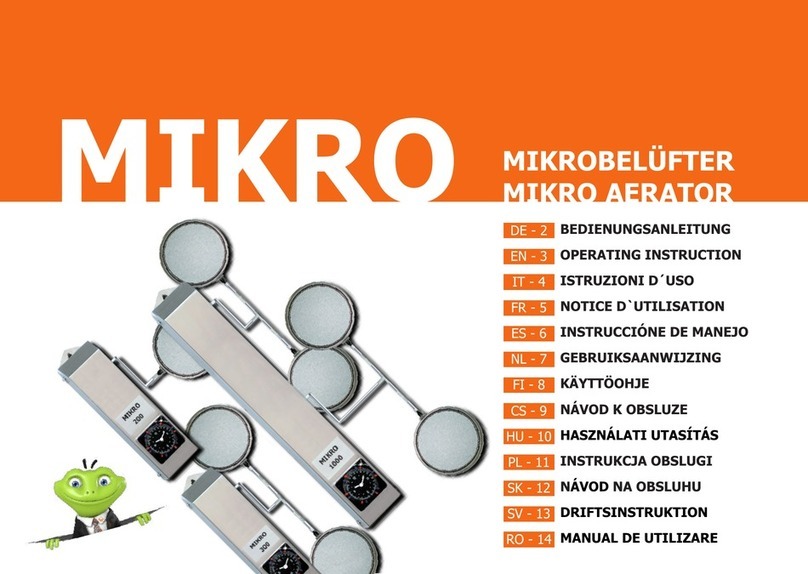
BIOBALANCE
BIOBALANCE Mikro 200 Operating instruction

Westfalia
Westfalia 82 12 25 Assembly instruction
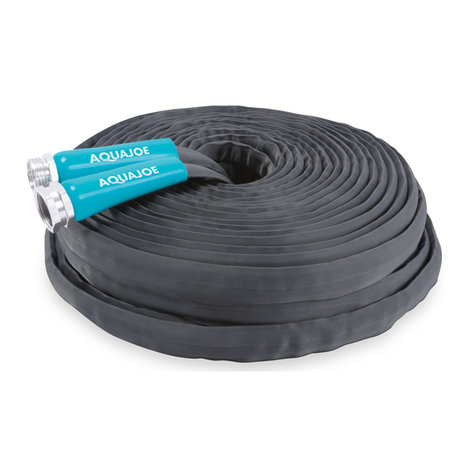
SNOWJOE
SNOWJOE AQUAJOE AJFJH100-PRO manual
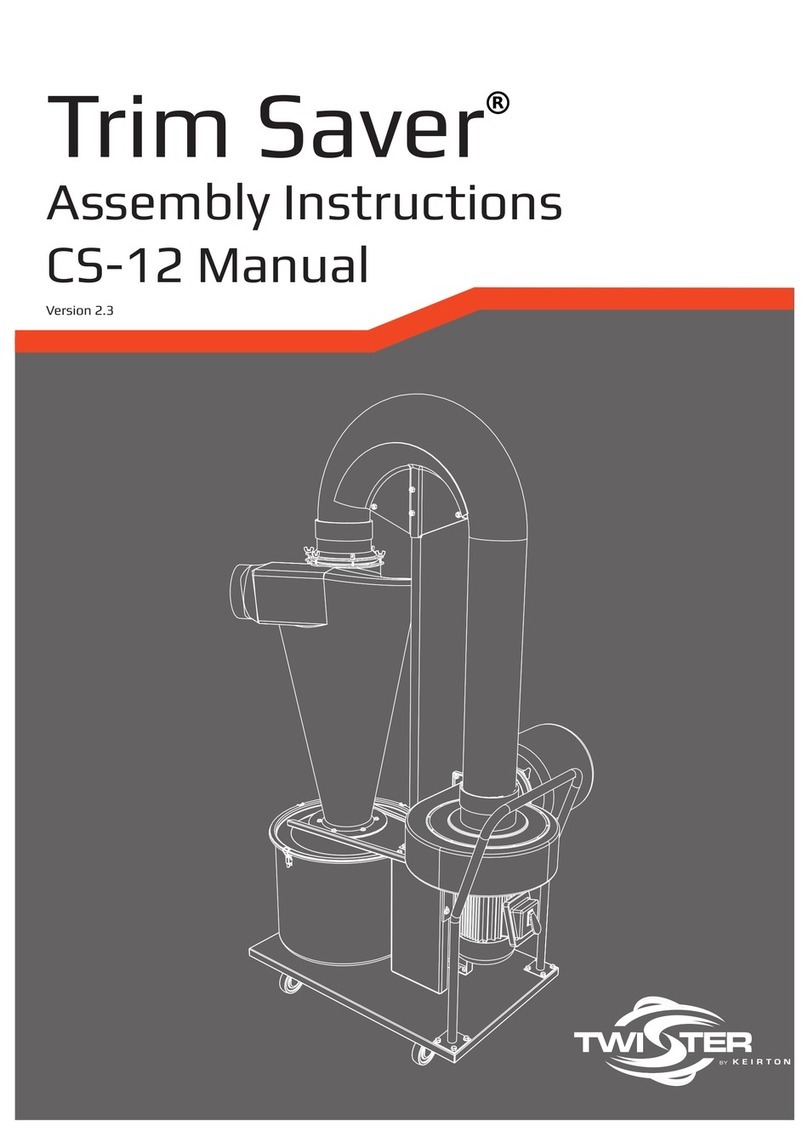
Twister
Twister Trim Saver CS-12 Assembly instructions

EINHELL
EINHELL GC-EC 7520 T Original operating instructions
